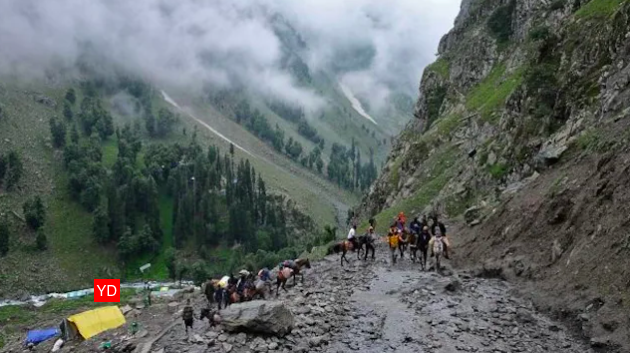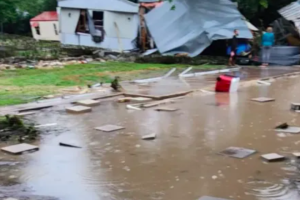Cloudburst is the reason that has been attributed as a cause of death of at least 13 Yatris in a flash flood near the Amarnath cave shrine in Jammu and Kashmir on Friday.
But was it indeed a cloudburst?
J&K DGP Dilbag Singh said 13 pilgrims were killed in the cloudburst that hit the area at around 5.30 pm. However, the India Meteorological Department (IMD) said that it was not a cloudburst.
Every year, IMD releases a special weather advisory for Amarnath Yatra. The general, daily forecast for the district on Friday was of yellow alert (means, keep watch). Even the evening forecast, up on the Amarnath Yatra forecast website at 4.07 pm, said, “Partly cloudy sky with possibility of very light rain” for all along the route from both Pahalgam side and Baltal side. There was no accompanying warning.
As per the data from the automatic weather station (AWS) at the holy cave, there was no rainfall from 8:30 am till 4:30 pm.
“Then there was just 3 mm rainfall between 4:30 pm and 5:30 pm. However, between 5:30 pm and 6:30 pm there was 28 mm rainfall,” said an IMD scientist.
As per IMD criterion, only if there is 100 mm rainfall in one hour then it is termed as cloudburst.
Then what exactly happened? According to eyewitness accounts and the multiple videos going viral on social media, a stream between two mountain faces — barely 200-300 metres away from the cave entry — brought down heavy rubble along with large quantity of water. Clearly, it was the result of rainfall behind the holy cave.
“It was a highly localised cloud only over the holy cave. Such rain happened earlier this year as well. It was not a flash flood,” said Sonam Lotus, who heads the Regional Meteorological Centre at Srinagar that looks after the UTs of Jammu & Kashmir and Ladakh.
Lotus also confirmed that it was likely that there was severe rainfall at a higher altitude than the cave.
Anand Kumar Sharma, retired meteorologist and former north India head of IMD, explained: “Rainfall is a highly variable parameter, and it is especially true for mountains with peculiar orography. Plus, the Yatra happens in peak monsoon season. Rainfall may not happen in front of the cave but somewhere upstream, which will have an impact downstream.”
He also said that for any given mountain, there are so many faces and each of them can have different rainfall. Likewise, there are ranges after ranges of mountains. How many automatic weather stations can you install,” he asked.
However, given the number of pilgrims increasing every year and the logistics involved, Sharma said there is a scope for increasing the AWS in the catchment areas and also raise the number along the route for better forecast.
Meanwhile, the weather outlook for the next two days warned of “intermittent scattered light to moderate rain thunder”.

























Add Comment